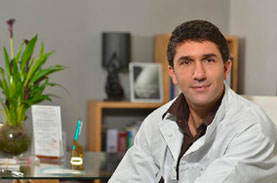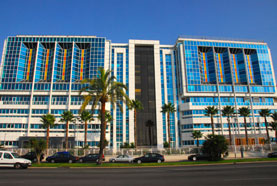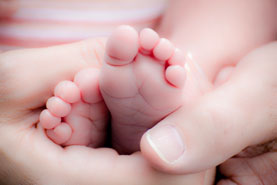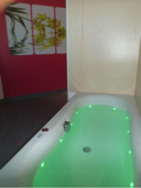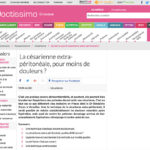The day of your delivery
You will be met by the midwife who will take note of your obstetric file and will proceed to your examination to inform then Dr. Velemir
Upon your arrival at the maternity ward
You will be welcomed by the midwife who will carefully read your obstetrical file (birth plan, pre-anaesthetic check-up, blood group card, …) and will proceed with your examination (monitoring of the baby, cervical examination if necessary, …) and then inform Dr. Velemir. He will take the appropriate measures to ensure your labour goes smoothly.
At time of delivery
Dr. Velemir makes the deliveries himself at the Santa Maria – Lenval Clinic in Nice. In case of absence, he will have an obstetrician colleague fill in for him.
Accompanying person
In the delivery room, you may be accompanied by one person of your choosing. For reasons of hygiene and safety, this will be the same person for the full duration of delivery.
Presence of the dad in case of scheduled caesarean
In case of scheduled caesarean, the dad may, if he wants to, be admitted into the operating room and welcome baby while by your side, under the condition that he respects a certain protocol. In case of an emergency caesarean, the dad cannot be present during the caesarean.
Epidural anesthesia
Is it systematic ?
Is it dangerous ?
At what time can we benefit from the epidural ?
What are the alternatives to epidural ?
Dilatation bathtub
The day of your delivery, you can have a part of your labour in a dilatation bathtub.
With its relaxing water streams and its soft and colourful atmosphere, it helps your cervix dilate easily without the need for an epidural.
If you want, you can return to the delivery room and have an epidural at any time.
What happens immediately after birth?
In case of vaginal birth, you will be kept under observation for two hours in the delivery room, during which time you won’t be able to eat or drink. This observation is carried out to prevent and treat the appearance of post delivery bleeding for which appropriate and timely action should be taken.
In case of delivery by Caesarean section, you will be under observation for two hours in the recovery room. This is an opportunity for you to rest. However, if you wish, you can, be taken in the delivery room to spend time with your baby and your spouse from time to time.
After two hours, you will be taken back to your room with your baby.
Skin-to-skin contact
What is it?
The skin-to-skin contact is a practice born in 1978 in a neonatal unit in Colombia. Originally, it was to compensate for the lack of incubators and thus to warm up premature babies by nestling against their mother’s bare skin. Today this practice has evolved and can be applied to all newborns.
What is the advantage?
The benefits of skin-to-skin are numerous.
For the child:
For mom (and dad):
In practice
Right from birth the newborn is placed directly, completely naked, on its mother, belly against belly, covered with a warm blanket and a bonnet (to prevent cooling). We ensure the baby has nothing near its face so it can breathe well and a small oxygen rate sensor is placed at its feet level to ensure that the baby breathes well during the whole duration of skin-to-skin contact. Thus skin-to-skin contact takes place shortly after birth and can last between 30 minutes and two hours, depending on the mom. The dad can also do it.
In which case skin-to-skin contact cannot be performed?
Dr. Velemir and the Santa Maria Maternity team will make every effort to help you have skin-to-skin contact. However, in some situations, skin-to-skin contact should be stopped and postponed, particularly if the baby is in respiratory distress which requires specific care. Moreover, in case of caesarean section, skin-to-skin contact is carried out in bits of time due to the need to monitor the mom in the recovery room after her Caesarean section. This is an opportunity for the dad to perform skin-to-skin contact.





